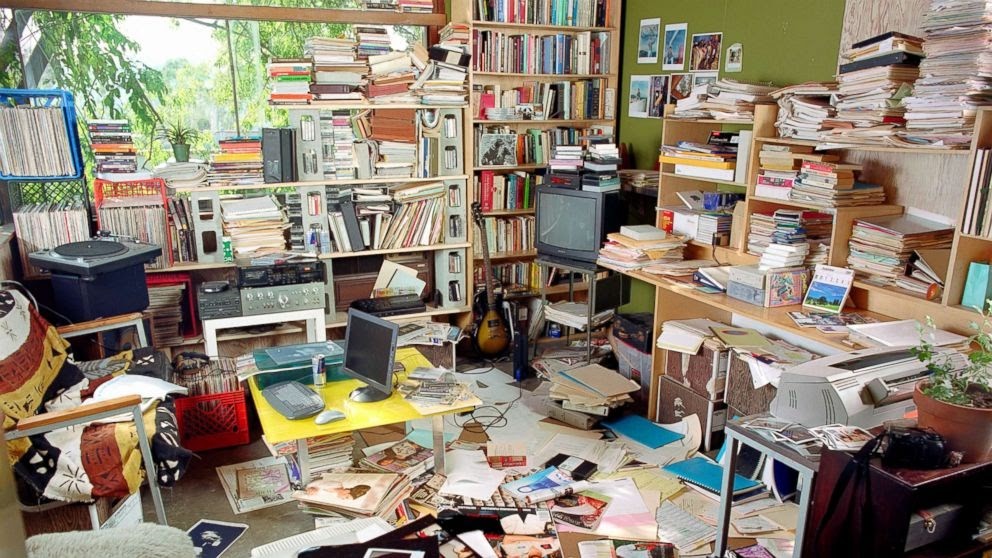
The fundamentals of every continuous improvement project are centered around an in-house 5S system. This article is to remind everyone of this simple, yet very useful and powerful methodology that we implement with our customers. The beauty of the principles is that they can and should be used in our daily lives and our own homes - studies, kitchens, closets, kids’ rooms, computer folders and then, when returned to work, to our offices and shopfloors.
So, what is 5S?
5S is a system comprising 5 steps, each beginning with the letter “S”. The primary objective is to, by following the methodology, engage people (at home and at work) and create and sustain an orderly and thus, safe living / working environment. A clean space, where everything in it has a place, and everything is in its intended place, exposes waste and issues at a glance. It helps establish the discipline required to sustain order and helps you pursue further improvement initiatives. It is such a simple concept that people often underestimate its importance.
Here is a question: CAN YOU FIND EVERYTHING YOU NEED AT ALL TIMES IN 15 SECONDS OR LESS? (the question should refer to everyone using the space). If the answer is NO, you need to implement 5S. Here is how:
1st S - SORT
Separate what is used regularly & necessary from what is not. Eliminate the unnecessary. Sometimes it is difficult to let go of something, thinking we “might need it one day” (that day usually never comes). Always be guided by: IF IN DOUBT, THROW IT OUT. If you need the item, but it does not belong in that space, move it into a separate pile that you will come back to in 2nd S to determine its most suitable location.
During the activity, always ASK YOURSELF about each item: Do I need it? Do I need it in this quantity? Do I need it in this location?
At the end of S1, you should be left with “only what is needed, only in the amounts needed and only when needed”.
2nd S – SET IN ORDER
Arrange the items left to make them easy to reach and accessible; make their location clear and visible (label them) so that anyone, including you, can spot them easily and put them back in place after use. It eliminates search time for items and all the frustration that goes with it. It creates the “PLACE FOR EVERYTHING AND EVERYTHING IN ITS PLACE” principle.
During the activity, always ASK YOURSELF about each item: How often do I use it? Will I move a lot to take it - is it accessible? How will I label it?
At the end of S2, you should have items you need frequently close to you with their locations marked properly.
3rd S – SHINE
Shine means cleaning but also inspection during cleaning. You want your space to look well organized, stocked with only the necessary items, clean and shiny. Don’t slack on this step – clean everything thoroughly. During the cleaning, you may find some abnormalities – broken or missing things, cracks, leaks, overheating, sparks, strange noises, etc. Fix them immediately or plan to have them resolved.
At the end of S3, your organized space should be bright and shiny, with all the problems you find addressed.
4th S – STANDARDIZE
Does your work / living space look better now and do you feel more motivated to work in it? If you've done all the above mentioned steps properly, the answer should be positive.
Now comes the difficult step – how to create a routine for yourself and everyone else in the household / at work to keep your space looking so spotless? The key is STANDARDIZATION - create rules (standards) for sustaining first 3Ss and make sure they are followed.
During the activity, always ASK YOURSELF: How often should cleaning be done? Who is responsible? How well are the conditions maintained?
Use calendars, checklists, pictures and any visuals that will allow you to highlight abnormalities early on. For example, any “shortcuts” by others should be addressed early on - items not returned where they belong, cleaning not done according to the schedule, the responsible people are not doing what they committed to.
At the end of S4, there should be clear standards in place with everyone adhering to them at all times.
5TH S – SUSTAIN
Sustain means maintain and improve. Create the necessary conditions to sustain engagement and commitment to 5S and to support all further improvement ideas, through: Rewards and recognition; Awareness promotion; Constant (creativity and any other) support; Satisfaction and excitement...
At the end of S5, we have a system in place and ideas of other improvements flowing in from the team.
So, why is 5S so important? Because people are:
- simply happier in clean, shiny, bright, organized spaces;
- more productive - they know where everything is at all times;
- safer - by reducing the clutter and keeping the bare necessities in orderly manner, nobody can trip, slip or fall;
- comfortable to have guests (and customers) at all times, not only when they are announced.
- motivated to further improve and take pride in it; The list goes on.
----------------------------------------------------------------------
This is a short overview of the simple, yet powerful tool, that could bring so much value to your home or organization. TECLA team and I suggest YOU follow, apply and HAVE FUN with it :). We will be here, happy to answer any questions and/or provide additional guidelines.
For further readings, we would suggest:
- 5 Pillars of the Visual Workplace: The Sourcebook for 5S Implementation (For Your Organization!) by Hiroyuki Hirano
- 5S for Operators : 5 Pillars of the Visual Workplace by Productivity Press


